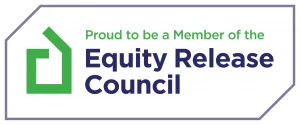What is a Drawdown Equity Release?

If you are exploring Equity Release you may be labouring under the misapprehension that you will need to receive the money in one lump sum. Most Equity Release providers also offer the ability to drawdown your Equity Release in instalments, via a drawdown facility, and you may even be able to take a combination of both a lumpsum and regular payments.
There is a myriad of reasons why you may wish to take your Equity Release in instalments rather than one lumpsum. Most commonly, people are concerned about declining income levels in retirement and opt to take instalments on their Equity Release to maintain the lifestyle they have become accustomed to.
Let’s explore drawdown Equity Release and the advantages and disadvantages of taking your Equity Release in instalments.
Lifetime Mortgages
In the UK there are two Equity Release products available, Lifetime Mortgages and Home Reversion Plans.
Home Reversion Plan providers will offer you a value for your equity upfront, typically far below market value and they essentially buy that portion of the equity from you at that point. Home Reversion Plans will normally insist on the money being paid in one lumpsum.
Lifetime Mortgages however allow you to borrow the money from the equity and you can in most cases choose whether the funds are paid in a lumpsum, instalments or a combination of the two. You retain 100% ownership of your property with a Lifetime Mortgage unlike a Home Reversion Plan.
With a Lifetime Mortgage you have to meet the following criteria:
- Your property must be mortgageable and valued over £75,000
- You must be 55 years of age or older
- You must have no mortgage on your property (or if a mortgage remains, it must be negligible)
How a Lifetime Mortgage Works
A Lifetime Mortgage provider will allow you to borrow money against the equity you hold in your property, typically up to 50% of the value of your home. This equity percentage varies between providers.
You can then reside in your home until you pass away or are unable to remain in the property and require long term care. The interest on the loan rolls up if you do not many any voluntary payments and when you die or go into long term care the lender will end the Lifetime Mortgage.
At this point you can repay the loan in full if you are still alive or if you have passed away, the liability goes into the probate process.
Your next of kin will have the option to repay the loan either by using funds in the estate or with personal money. If they are unable or unwilling to do so, the property will be sold, and any remaining profit will be transferred to your next of kin.
What Can Equity Release be Used For?
Lifetime Mortgages place no restrictions on borrowers in terms of how they choose to use the money – as long as it is used for legal means. This means you can use the money from your drawdown for whatever you need to, including additional retirement income.
Typically, borrowers use drawdown Equity Release to:
- Subsidise income in retirement
- Take an annual holiday
- Pay off existing debts

Of course, this list is not exhaustive, and you may need the instalments for other purposes such as making overpayments on a separate mortgage.
Free consultations are offered in the UK.
Get Started NowPros of an Equity Release Drawdown
The advantages of Equity Release drawdown are that you avoid the burden of a large lumpsum initially that might require ongoing budgeting to make the money last.
For some borrowers, the temptation to spend the lumpsum is great and they opt for a drawdown Equity Release just to ensure they do not blow through the money.
By budgeting in this way, you may find it easier to maintain financial stability in a sustainable way as you grow older.
Another advantage is drawing down on Equity Release provides a level of flexibility, allowing you to access the funds when you need them. Interest is only payable once you drawdown the funds so by only drawing down the funds when you need them, you will save a significant amount of interest in the long-run.

Cons of an Equity Release Drawdown
There are a couple of main negatives to drawing down on Equity Release compared to receiving the funds in a lumpsum:
The first is that a drawdown facility is not guaranteed. Lenders have the right to withdraw or limit access to your drawdown facility subject to their terms and conditions. For example, recently house valuations fell in the U.K for a short period. During that period, many Lifetime Mortgage lenders pulled drawdown facilities entirely as the loan-to-value in the property had technically been adversely affected by the external environment. This was sufficient grounds in their terms and conditions to pull their drawdown facilities.
Secondly, drawing down may be wholly unsuitable for your needs. If you are looking to put a deposit down on another property or buy the holiday you have always dreamed of, you may need a lumpsum to cover those costs.

Is a Drawdown Facility Guaranteed?
Most Lifetime Mortgage providers are flexible with how you receive the funds from your Equity Release. Where lenders offer drawdowns, they actually benefit by holding the money and generating interest.
Drawdown facilities are not guaranteed, and a lender may not offer you the chance to be paid in instalments. Lenders may not offer them in the first place and, as discussed, they may even remove pre-arranged drawdown facilities at a later date. While a lender will benefit from any interest on the funds they retain, they are also taking on additional liability by holding the funds for you and some lenders are not keen to do that.
What Our Clients Have To Say
Speak to an Equity Release Expert
Equity Release is tremendously flexible in terms of how you receive the funds and what you can use them for. Unlike traditional mortgages you will not be pigeonholed into spending the funds for a specific purpose.
No two borrowers are the same with Equity Release, there are many factors that will determine the best way for you to receive the funds. You should discuss your financial situation in full with your Equity Release adviser and ask about any options you are particularly concerned about.
Boon Brokers is a Whole of Market Mortgage, Insurance and Equity Release Broker. Boon Brokers provides fee free mortgage and Equity Release advice.
Contact Boon Brokers to book your initial drawdown Equity Release consultation today.
Gerard BoonB.A. (Hons), CeMAP, CeRER
Gerard is a co-founder and partner of Boon Brokers. Having studied many areas of financial services at the University of Leeds, and following completion of his CeMAP and CeRER qualifications, Gerard has acquired a vast knowledge of the mortgage, insurance and equity release industry.Related Articles





